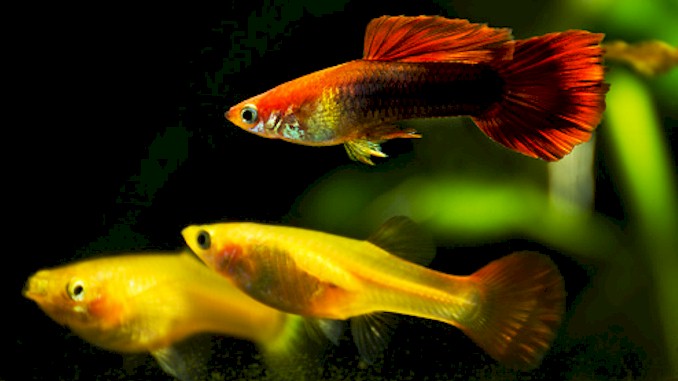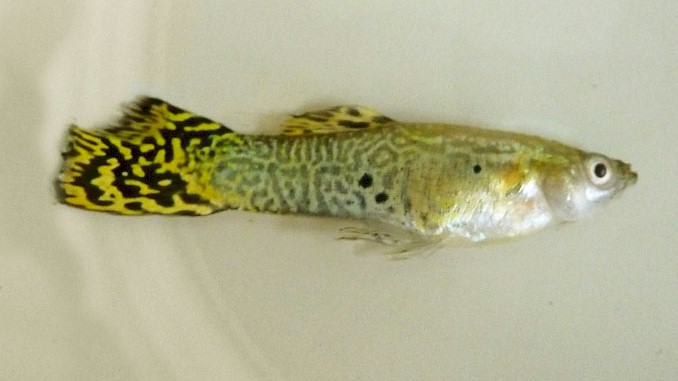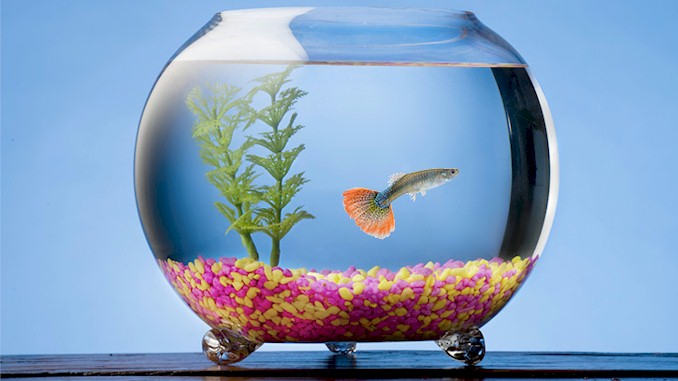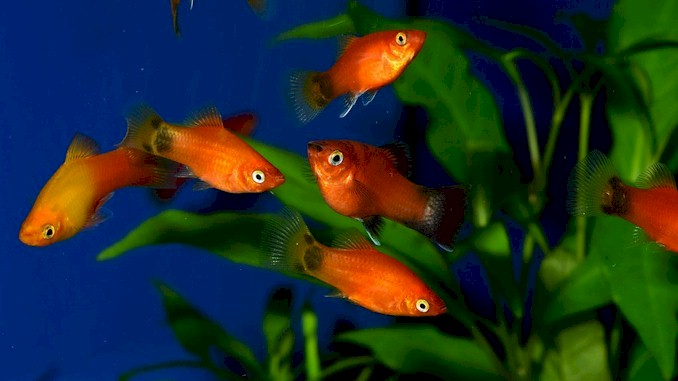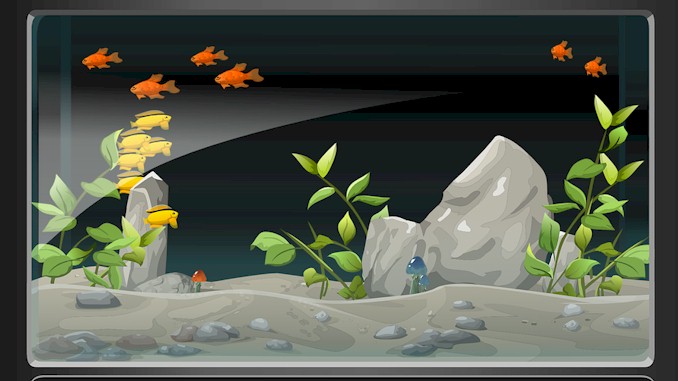Swimming in Good Company: Top 13 Guppy Tank Mates
Greetings, aquarium enthusiasts! As a fishkeeper like you, I understand the importance of selecting compatible tank mates for your aquatic pets. If you’re the proud owner of guppies and looking to diversify your aquarium, you’ve come to the right place. In this blog post, I’ll be sharing my top 13 picks for the best tank mates for guppies. With my experience in fish keeping, I’m confident that I can help you find the perfect companions for your guppies, creating a harmonious and vibrant underwater world in your tank. So, let’s dive in and explore the best options for your guppy tank!
When it comes to finding suitable tank mates for guppies, there are a variety of options to consider. Some of the best choices include Platies, Mollies, Honey Gouramis, Cardinal Tetras, Harlequin Rasboras, Swordtails, Otocinclus Catfish, Neon tetras, Nerite Snails, Bristlenose Plecos, Kuhli Loaches, Cory Catfish and Siamese Algae Eater.
But wait, there’s more! In addition to discussing the top tank mates for guppies, I’ll also be sharing some tips on how to introduce new fish to your guppy tank, as well as how to maintain a healthy and balanced ecosystem. With these additional insights and advice, you’ll be well-equipped to create a stunning aquarium that your guppies will love. So, keep reading to discover more valuable information on this exciting topic!
Top 13 Tank Mates for Guppies: A Comprehensive Guide
1. Platies
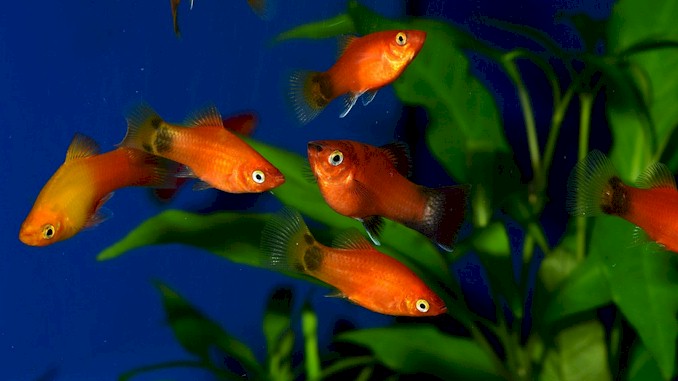
The platy is a popular fish with lots of colors and varieties. They do best in freshwater aquariums and reproduce rapidly.
Platies are very peaceful and will make great tank mates. Be prepared though, because you will end up with lots of baby fish. But if you have guppies you might be prepared for this anyway.
Platies are strong eaters and like to eat a wide variety of flake food and freeze dried bloodworms.
2. Mollies

Mollies are a versatile species that can thrive in both freshwater and saltwater aquariums. They’re known for being resilient and can withstand a range of environmental conditions. Like guppies, they’re also peaceful and give birth to live young, making them an ideal choice for community aquariums.
One advantage of keeping mollies is their ability to reproduce quickly, so you can easily build up a thriving colony in a small home aquarium. They’re also low-maintenance and remain relatively small, making them a great choice for beginners.
Since mollies share many similarities with guppies, they make excellent tank mates. They’re easy-going and generally don’t cause any trouble, which means they can coexist peacefully with guppies without any issues.
If you’re searching for a low-maintenance, peaceful fish that will thrive in your aquarium, the molly is a fantastic choice.
3. Honey Gouramis
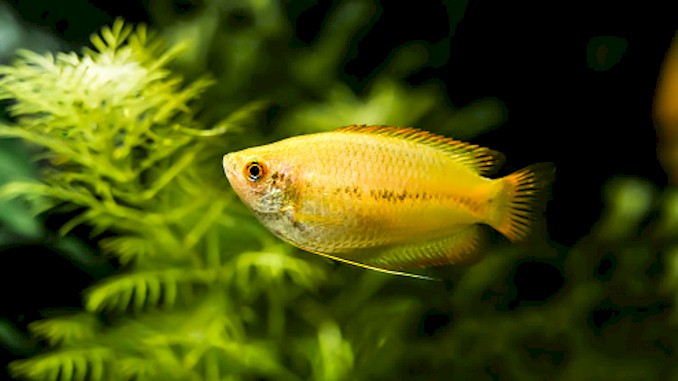
If you’re more experienced or just want to care for a fish that’s more advanced, Honey Gouramis are a great choice.
These fish have a peaceful temperament, and guppies and honey gouramis will make a wonderful display for your aquarium.
Honey gouramis need planted tanks with lots of shade and adequate hiding places. Floating plants are often used in honey gourami tanks to create a shaded and natural environment. Almond leaves are also a great option and have lots of natural benefits. In addition to their specific tank requirements, Honey Gourami are very social fish and should always be kept in groups of 4-6. For aquarists with smaller tanks, this fact alone can knock this species off of your list.
4. Cardinal Tetras
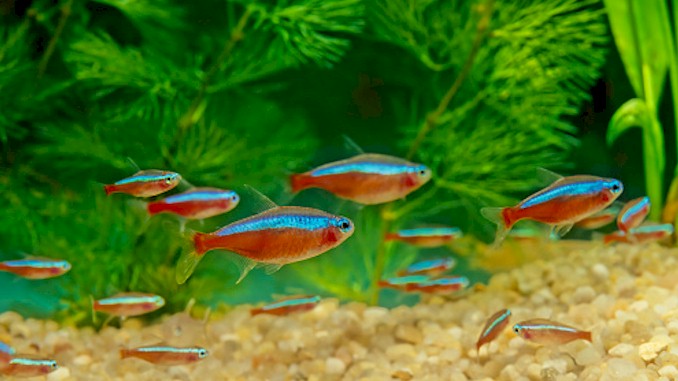
The cardinal tetra is a really close cousin of the neon tetra. These small colorful fish are very popular because of their lively nature and interesting schooling habits. Although they seem really fragile, cardinal tetras are relatively easy to care for.
They are schooling fish that need to be kept in groups of 7 or more. 30+ gallon tanks can hold about 15-20 cardinal tetras. Large schools of them are very beautiful to watch. Especially when combined with guppies.
Warning: Cardinal tetras may see the guppy fry as a tasty snack and will eat them if your tank doesn’t have enough hiding places. If you don’t plan on raising the fry this shouldn’t be a problem. If you do, make sure to remove the fry early or provide lots of hiding places.
5. Harlequin Rasboras

Harlequin Rasboras have a lively nature and are easy to care for, and the golden-bronze metallic colors make them wonderful fish for any aquarium (especially when they are kept in large schools. As schooling fish, Harlequin Rasboras should be kept in groups of 8-12 and do best in planted tanks. If kept in groups smaller than 3 or 4, Harlequin Rasboras can become timid and stressed.
Because of their peaceful nature, Harlequin Rasboras make great Guppy tank mates (and great community fish in general). Although they usually reside in the same water layer as Guppies, you shouldn’t experience any aggression between the two species.
6. Swordtails
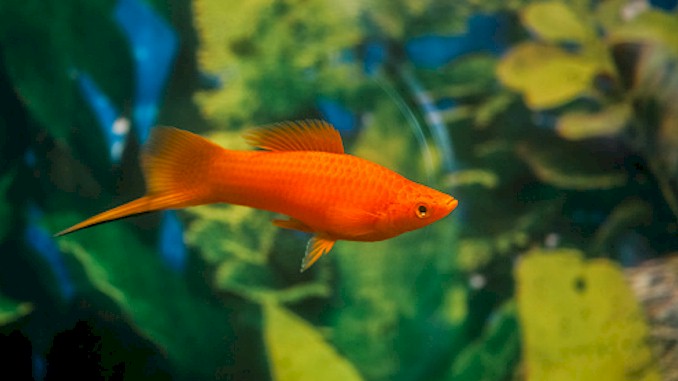
Swordtails have a great temperament, get along with most freshwater fish, and add quite a unique look to any aquarium. Just like guppies and platies, swordtails are live-bearing species and will often breed if both males and females are present.
Swordtails are very easy to care for. They are adaptable and forgiving when it comes to water conditions. For fish owners who are looking for easy-to-keep guppy tank mates, swordtails are a great choice.
7. Otocinclus Catfish

The Otocinclus catfish (more commonly known as Oto catfish) is one of the most beloved freshwater fish species. They are mild-tempered and rather shy. Oto catfish love habitats with lots of plants and driftwood to use as hiding places. They like to be kept in small groups. 3 or 4 seems to be the appropriate number.
Many aquarists love Oto catfish, not just because of their docile nature but for their insatiable appetite for algae. Although they are small, a group of Oto catfish can clean a tank full of algae in just a few days. I suggest you feed them algae wafers to make sure they’re getting enough nutrition.
Oto catfish can be a bit sensitive to sub-par water conditions. It is best to let your tank mature before adding these sensitive fish. Also, make sure you keep an eye on your guppies. Even though you shouldn’t experience any aggression, guppies can be nippy (fin nippers) once in a while.
8. Neon Tetras
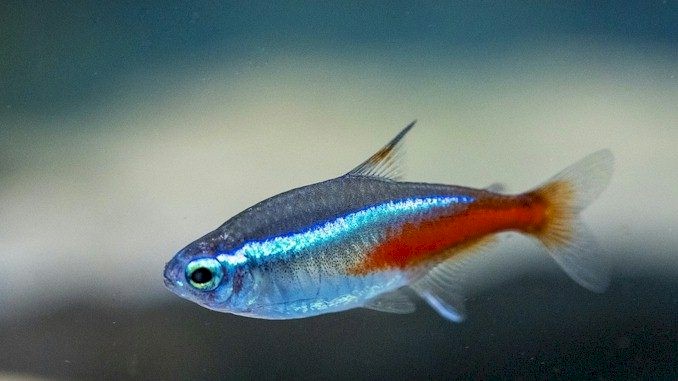
Neon tetras are known to be very peaceful. They love eating algae and tend to be rather small. They’re schooling fish, so I recommend that you keep at least six or more neon tetras.
They swim very fast and will probably be ok with a guppy chasing them.
They are quite shiny. Trust me when I say this: Guppies and neon tetras together will be a masterpiece in your tank!
Just be careful, though. Neon tetras are fin nippers. If your guppy fins are getting torn and getting shorter, another guppy or a neon tetra might be fin-nipping other fish. To stop this, check if any of the neon tetras are stressed. Stressed neon tetras undoubtedly fin nip. And you should also check the water parameters.
If none of this help, you might have to separate the neon tetras from the tank. Or if it is a guppy, separate it.
9. Nerite Snails

Ok, this isn’t a fish, but it’s still a good guppy tank, mate. These are one of the most popular freshwater snails kept in aquariums. They are prized for their docile nature and incredible algae-eating capabilities. In fact, they are regarded as the best algae-eating snail species out there! They can tackle a tank full of algae like no one else!
Nerite snails are 100% safe to keep with your guppy (which doesn’t say the same for other snail species) and are like live plants. They can reproduce quite rapidly. They also need saltwater to reproduce, so you don’t have to worry about them taking over your tank.
Overall, Nerite snails are a great, low-cost option for fish keepers looking for a clean-up crew.
10. Bristlenose Plecos
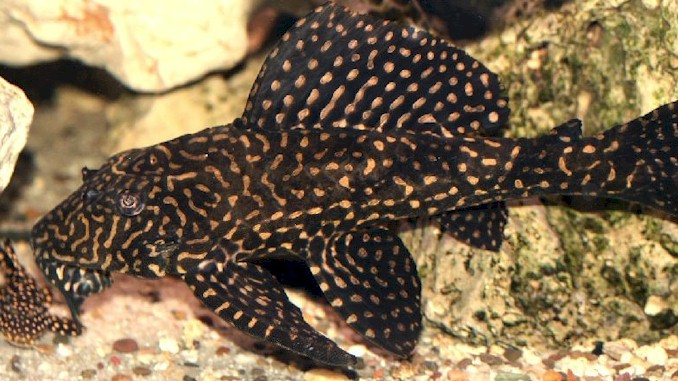
I really don’t recommend Bristlenose Plecos for beginner fish keepers. Since they usually get way too large. It stays small enough to be in a 25-30 gallon tank. But, if you are an expert in keeping fish and have a large enough tank, Bristlenose Plecos make amazing tank mates for your guppy.
Bristlenose Plecos will stay at the bottom of your tank 95% of the time. You can usually find them scavenging for food and snacking on tasty algae. Since your guppies and Bristlenose Plecos will usually stay in different parts of the tank, they won’t get in each other’s way. Guppies usually stay in the middle of the tank, while Bristlenose Plecos will stay at the bottom of the tank.
In addition to being great tankmates, Bristlenose Plecos can keep your tank clean by eating overgrown algae and leftover fish food. But Bristlenose Plecos can’t survive on algae and leftovers all the time. I suggest throwing in some algae wafers once in a while to keep your Bristlenose Pleco happy and healthy.
11. Kuhli Loaches
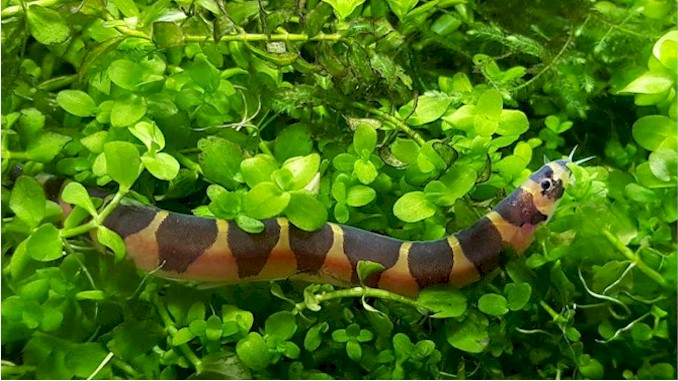
This unique, eel-like species is one of the most exciting freshwater fish you can find. If you’re looking for something different and unique, the Kuhli Loach is a great choice. Despite their unique look, Kuhli Loaches are peaceful and get along with many other freshwater species, especially guppies. They prefer to be kept in a small groups of 3-5. They remain rather small. They only grow to be about 3-4 inches.
The optimal habitat for the Kuhli Loach contains lots of live plants, driftwood, and a sand substrate (pool filter sand works well). Like Cory Catfish, rough or rocky substrates can damage the fins and stomach of the delicate Kuhli Loach.
Since Kuhli Loaches are naturally nocturnal, don’t be surprised if you don’t see them for the first few days. As these fish adjust to your tank, they will be more comfortable feeding and socializing during daylight hours.
12. Cory Catfish

Cory Catfish is one of the most peaceful freshwater fish species and great to keep. They can get along with lots of other species of fish, so it’s not a surprise that Cory Catfish make great tank mates as well.
If you plan to keep Cory Catfish, make sure you set up a tank with a sand substrate. Gravel is too coarse for Cory Catfish and can damage their fins and barbels.
13. Siamese Algae Eater
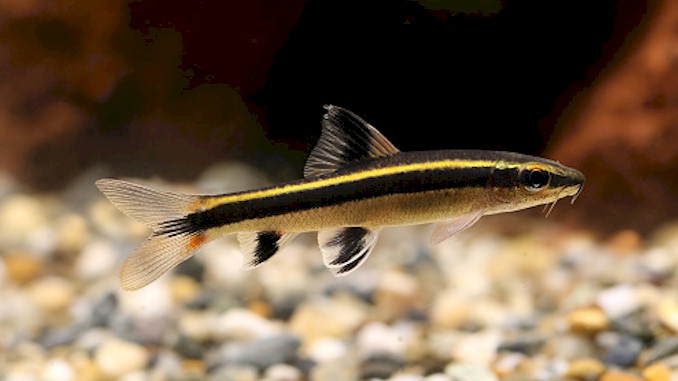
Meet the Siamese Algae Eater – the algae-busting superhero of the aquarium world! These fish are in high demand for their remarkable ability to keep your tank sparkling clean. While most other algae eaters are rather passive, the Siamese Algae Eater is an active little creature that will roam around your tank, seeking out algae to munch on.
You’ll find them mainly at the bottom of the aquarium, where they’ll scour every inch of substrate for tasty morsels. Siamese Algae Eaters are also known to be peaceful creatures, making them great companions for your guppies, danios, and tetras. They enjoy a planted tank, providing them with plenty of hiding spots and food sources.
While their favorite food is algae, these guys will also chow down on other foods like insects and live foods, making them easy to feed. So, if you’re looking for an active and peaceful tank mate that will keep your aquarium clean, the Siamese Algae Eater is definitely worth considering!
How to Introduce New Fish to Your Guppy Tank Safely and Effectively
Introducing new fish to your guppy tank can be a fun and exciting experience. However, it is essential to do it safely and effectively to ensure that your existing fish remain healthy and happy. Now, let’s explore the process of introducing new fish to your guppy tank safely and effectively.
Prepare the Tank
Before you bring new fish into your guppy tank, you need to prepare the tank. First, ensure that the water quality is suitable for your existing fish. Test the water to make sure that the pH, ammonia, nitrite, and nitrate levels are within the acceptable range. You can use a water testing kit to check the water quality.
Next, ensure that the tank is adequately aerated and filtered. The filter should be able to handle the additional bioload that comes with new fish. You may also need to add additional plants or hiding spots to the tank to provide your existing fish with places to hide and feel secure.
Choose Compatible Fish
Choosing the right fish to introduce to your guppy tank is crucial. You want to select fish that are compatible with your existing fish in terms of temperament, size, and diet. Research the fish you plan to introduce to determine their ideal water conditions and temperament.
Avoid adding aggressive fish to your guppy tank, as they may attack or stress out your existing fish. You can also choose fish that are known to be compatible with guppies, such as neon tetras, platies, and corydoras.
Quarantine New Fish
Quarantining new fish before introducing them to your guppy tank is essential. It allows you to monitor the fish for any signs of illness or disease and prevent the spread of any infections to your existing fish.
Set up a quarantine tank that is separate from your guppy tank and places the new fish in it. Monitor the fish for at least two weeks to ensure that they are healthy and disease-free before introducing them to your guppy tank.
Introduce the Fish Slowly
When it’s time to introduce the new fish to your guppy tank, do it slowly. Add the new fish to the tank in small increments over a period of several hours or days. This allows your existing fish to adjust to the presence of the new fish and reduces the risk of aggression.
You can also try feeding your existing fish before introducing the new fish to the tank. This can distract them and make them less aggressive toward the new fish.
Monitor the Fish
After introducing the new fish to your guppy tank, monitor them closely for any signs of stress or illness. Watch for changes in behavior, such as hiding or lethargy, as well as physical symptoms like white spots or torn fins.
If you notice any signs of illness, isolate the affected fish and treat them in a separate tank to prevent the spread of the disease to the other fish.
Introducing new fish to your guppy tank can be a rewarding experience, but it requires careful planning and execution. By preparing the tank, choosing compatible fish, quarantining new fish, introducing them slowly, and monitoring them closely, you can ensure a safe and effective introduction of new fish to your guppy tank.
Remember to always put the health and well-being of your existing fish first and take the time to research and plan before adding new fish to your tank.
Maintaining a Healthy and Balanced Ecosystem in Your Guppy Tank
As an aquarium enthusiast, you want to ensure your guppy tank is a healthy and balanced ecosystem for your fish to thrive in. Guppies are known for their bright colors and active personalities, and with proper care, they can live long and healthy life. Now, I’m going to share with you useful tips and guidelines to help you maintain a healthy and balanced ecosystem in your guppy tank.
Choosing the Right Tank Size and Type
The first step in creating a healthy and balanced ecosystem for your guppies is to choose the right tank size and type. Guppies are small fish that do well in tanks of at least 10 gallons or more. When choosing a tank, make sure it has a lid to prevent your guppies from jumping out. An open-top aquarium can also lead to rapid water evaporation, which can cause problems for your guppies.
Creating the Ideal Water Conditions
The water in your guppy tank is crucial for maintaining a healthy and balanced ecosystem. Guppies are tropical fish that thrive in water temperatures between 75 and 82 degrees Fahrenheit. It is important to monitor the water temperature regularly and make adjustments as necessary. In addition to temperature, you should also pay attention to other water parameters such as pH, ammonia, nitrate, and nitrite levels. The ideal pH range for guppies is between 7.0 and 7.2, and ammonia, nitrate, and nitrite levels should be kept as close to zero as possible.
Maintaining Good Water Quality
Good water quality is essential for the health and well-being of your guppies. To maintain good water quality, you should perform regular water changes. A good rule of thumb is to change 25% of the water in your tank every two weeks. You can also use a water test kit to monitor the water quality and make adjustments as needed. It is also important to avoid overfeeding your guppies, as excess food can lead to poor water quality.
Choosing the Right Tank Mates
When choosing tank mates for your guppies, it is important to select fish that are compatible with guppies and have similar water requirements. Some good options include neon tetras, cory catfish, and plates. Avoid keeping aggressive or territorial fish with guppies, as they can stress out your guppies and lead to health problems.
Providing Adequate Filtration and Aeration
Proper filtration and aeration are essential for maintaining a healthy and balanced ecosystem in your guppy tank. A filter helps to remove excess waste and debris from the water, while an air pump provides oxygen and promotes good water circulation. You should choose a filter that is appropriate for the size of your tank and make sure it is working properly. In addition, you should run your air pump for at least a few hours each day to ensure that your guppies have enough oxygen.
Maintaining a Consistent Feeding Schedule
A consistent feeding schedule is important for the health and well-being of your guppies. Guppies should be fed small amounts of food several times a day. You should choose a high-quality fish food that is appropriate for guppies and avoid overfeeding them. Overfeeding can lead to poor water quality and health problems for your guppies.
Observing and Monitoring Your Guppies
Observing and monitoring your guppies regularly can help you detect any health problems early on. Some common signs of health problems in guppies include lethargy, loss of appetite, and abnormal behavior. If you notice any of these signs, you should take action immediately to prevent further health problems.
The Benefits of Choosing Compatible Tank Mates for Your Guppies
As a responsible aquarium owner, one of your top priorities is to make sure that your fish are happy and healthy in their environment. One way to ensure this is to carefully select compatible tank mates for your guppies. By choosing fish that get along well with your guppies, you can create a harmonious and stress-free environment for your aquatic pets. Here, let’s explore the benefits of selecting compatible tank mates for your guppies, and provide some tips for choosing the right fish to coexist with your guppies.
Creating a Peaceful Environment for Your Guppies
Guppies are social fish that thrive in groups, so it’s important to choose tank mates that won’t disrupt their peaceful nature. When selecting fish to coexist with your guppies, it’s important to consider their temperament and behavior. Aggressive fish, for example, can easily stress out your guppies, leading to health problems and even death. On the other hand, peaceful fish can help create a sense of security for your guppies, making them more relaxed and content.
Preventing Disease
Another benefit of selecting compatible tank mates for your guppies is that it can help prevent disease. When fish are stressed, they are more susceptible to illness and disease. By choosing peaceful fish that won’t disrupt the environment, you can reduce the chances of your guppies getting sick. Additionally, certain fish species can help keep your tank clean by eating algae and other debris. This can also help reduce the risk of disease in your tank.
Tips for Choosing Compatible Tank Mates
Now that you understand the benefits of selecting compatible tank mates for your guppies, it’s time to choose the right fish for your aquarium. Here are some tips to help you make the right choice:
- Research fish species – Before choosing a fish to coexist with your guppies, make sure to research their temperament and behavior. Some good options include mollies, platies, and swordtails.
- Consider tank size – It’s important to choose fish that are appropriate for the size of your tank. Overcrowding can lead to stress and disease, so make sure to choose fish that can comfortably coexist in your tank.
- Avoid aggressive fish – As mentioned earlier, aggressive fish can easily stress out your guppies. It’s best to avoid species like bettas and cichlids, which are known to be aggressive.
- Introduce new fish slowly – When adding new fish to your tank, it’s important to do so slowly. This allows your guppies to get used to the new fish, reducing the chances of stress and aggression.
In conclusion, selecting compatible tank mates for your guppies is crucial for their health and well-being. By choosing peaceful and compatible fish, you can create a stress-free environment for your aquatic pets, reduce the risk of disease, and ensure that your guppies live happy and healthy lives. Remember to research fish species, consider tank size, avoid aggressive fish, and introduce new fish slowly to create the ideal environment for your guppies.
Fish to Avoid Putting With Your Guppies
Angelfish

Although I have a soft spot for Angelfish, I have to admit that they’re not the ideal companions for guppies (contrary to what some other sources might suggest). While small Angelfish can coexist with guppies, larger ones are more likely to view them as a tasty snack.
If you’re still keen on keeping Angelfish, consider adding some bigger tank mates such as Cory Catfish, Bristlenose Plecos, Swordtails, or Mollies to keep the peace.
Note: While some have reported success with Angelfish and guppies living together harmoniously, it’s important to be prepared for the possibility that your guppies may “mysteriously” disappear.
Cichlids
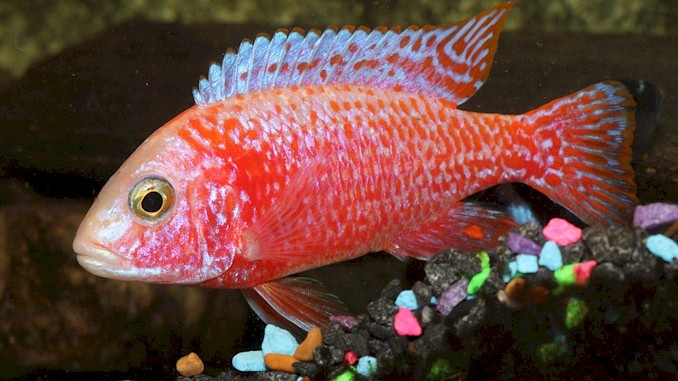
It’s no secret that cichlids are known for their aggressive behavior, speed, and appetite for small fish. Unfortunately, guppies happen to fall into this category, making them a prime target for cichlids looking for a quick and easy meal.
Adding to the problem, cichlids are notorious for their territorial nature. They tend to stake out a specific spot in the tank and aggressively defend it against any perceived threats – including guppies innocently swimming by.
As much as guppies enjoy their energetic laps around the tank, this behavior can lead them straight into cichlid territory, putting them at risk of being attacked or devoured. Ultimately, it’s best to avoid pairing guppies with cichlids to ensure the safety and well-being of all the fish in your aquarium.
Endlers Livebearers

Although Guppies and Endler’s Livebearers may seem like they make great tank mates due to their compatibility, there’s actually a significant issue to consider – they have a tendency to crossbreed. While this may sound like a positive thing, it can result in weak and unhealthy offspring, leading to various health problems.
It’s important to note that true Endlers are quite rare in the wild, so if you happen to have a pure line of these fish, it would be unfortunate to compromise their genetic makeup by allowing them to crossbreed with guppies.
As a responsible fish keeper, it’s crucial to consider the long-term impact of your choices on the health and well-being of your aquatic pets. While crossbreeding may seem like a harmless activity, it can have severe consequences that may impact the entire population of fish in your tank. It’s best to avoid crossbreeding altogether and select compatible tank mates to ensure a thriving and healthy aquatic community.
Barbs

It’s important to note that Tiger barbs, Rosy barbs, Gold barbs, and Denison barbs are species of fish that can cause significant problems when kept together with guppies. These barbs are known as fin-nippers and can cause severe harm to the delicate long fins of guppies, resulting in irreversible injuries, fin damage, and potentially fatal infections.
Additionally, barbs are fast swimmers, making it impossible for guppies to escape from them. This puts the guppies at constant risk of injury and stress, leading to an unhealthy and potentially deadly living environment.
It’s crucial to prioritize the safety and well-being of your aquatic pets and to choose compatible tank mates. In this case, it’s highly recommended to avoid keeping barbs with guppies to prevent any harm from occurring. By selecting peaceful and compatible fish, you can ensure a healthy and thriving aquatic community.
Oscar Fish

It’s crucial to be aware that Oscar fish are considered predatory fish that have a strong tendency to attack and consume their guppy tank mates. Guppies are even used as feeder fish for Oscar fish due to their aggressive nature.
In addition to their predatory behavior, Oscars grow up to 14 inches in length, making them a species that requires a spacious aquarium to thrive. Due to their size and temperament, there are limited options when it comes to selecting fish that can be kept together with Oscars. However, Jack Dempsey or Bala Shark fish can be suitable companions.
It’s essential to keep in mind that the compatibility of fish in an aquarium is critical for their overall well-being and safety. While Oscars may be fascinating to observe, it’s essential to provide them with a suitable and safe living environment and avoid keeping them with smaller fish such as guppies. By selecting compatible tank mates and providing them with the necessary conditions, you can ensure a thriving aquatic community.
Goldfish

It’s important to keep in mind that large goldfish have a voracious appetite and will not hesitate to prey on their smaller guppy tank mates. Therefore, it’s highly advised to keep them in separate aquariums to ensure the safety of the guppies.
Furthermore, goldfish have a high bioload, which means that they produce a lot of waste, and they prefer colder water temperatures than what guppies can tolerate. These significant differences in their preferred living conditions make it difficult for them to coexist in the same aquarium.
Taking into consideration all these factors, it’s evident that goldfish and guppies are not compatible and don’t make a good match. As an aquarium owner, it’s crucial to consider the individual needs of each fish species to provide them with a healthy and safe living environment.
Killifish
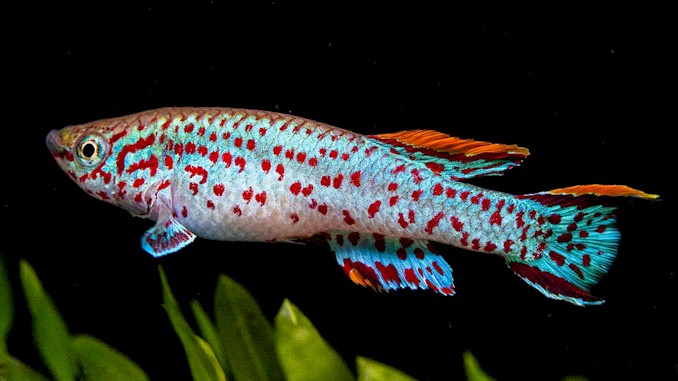
The killifish is a stunningly vibrant species of fish that also happens to be quite aggressive. Unfortunately, this means that they are not a suitable addition to a guppy fish tank as they have a tendency to attack and harm the guppies.
While it is true that female killifish are less aggressive and territorial compared to their male counterparts, it is still not advisable to keep them together with guppies. The risk of harm and aggression is still present and can ultimately lead to a dangerous environment for all the fish involved.
Therefore, it is best to keep killifish separate from guppies and other peaceful fish to ensure the safety and well-being of all your aquatic pets. It may be disappointing not to be able to add such a visually stunning fish to your tank, but it’s always better to prioritize the safety and health of your fish over aesthetics.
Flowerhorn Fish
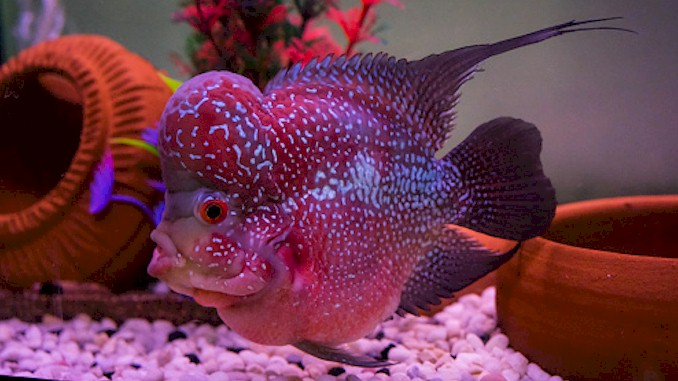
The Flowerhorn fish is a unique and peculiar species that can be easily recognized by its large, bulky body and vibrant colored hump situated on its forehead. At first glance, it’s hard not to feel intimidated by this fish’s imposing presence.
These fish are known to be territorial and aggressive, which makes it difficult for them to coexist with other fish. They prefer to be kept alone or in a pair. However, during mating season, Flowerhorn fish may exhibit even more aggressive behaviors, so it’s essential to monitor them closely to avoid any potential fights.
It’s important to note that any aggressive fish that displays behavior such as fighting or nipping at other fish’s fins can be dangerous to guppies. Large fish that may see guppies as prey should not be kept in the same tank as guppies.
In conclusion, while the Flowerhorn fish may be fascinating to observe, it’s crucial to keep them in a separate tank to ensure their safety and the safety of other fish in the aquarium.


